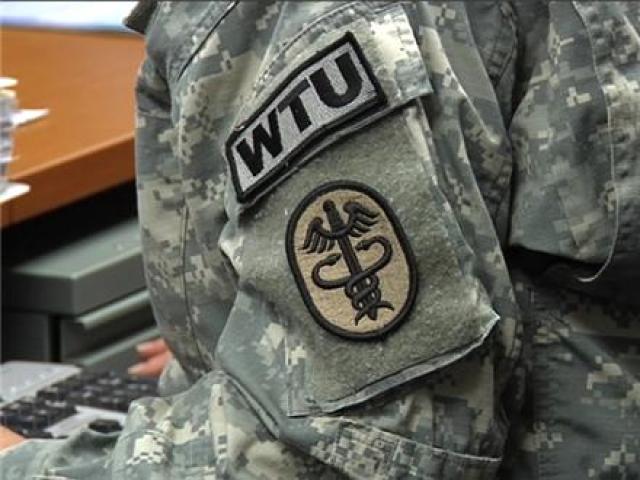The Warrior Transition Command is developing a consolidated regulation that will provide complete oversight and guidance for its 29 units across the Army.
The new regulation was one of the recommendations of a 158-page Inspector General report concerning the Warrior Transition Units that WTC Commander Brig. Gen. Darryl Williams spoke to reporters about Jan. 25, at the Pentagon.
Inspectors noted that the Warrior Care and Transition Program had no single synchronizing document which outlined governing policies, guidance and regulatory requirements. In lieu of a primary instruction or regulation, the WTUs have been working under numerous orders, messages, directives and policy memos which create varying interpretations and cause some confusion among the staff.
“Folks in my organization need to be able to pull off their shelf a single document, an Army regulation that contain the rules and missions, and where they (WTUs) fit into this bigger picture,” said Williams, who was promoted to brigadier general Feb. 4. “It’s very confederated right now and what we hear most about from the field.”
So the WTC is now working with G-1 on a regulation for its 29 WTUs and Community-based Warrior Transition Units.
Williams said he expects most of the tasks recommended by the IG report to be completed by this summer.
However, the IG team’s conclusion that the Comprehensive Transition Plan was not being applied consistently across the WTUs is an example of conflicting guidance, according to Williams. He said the six-part Comprehensive Transition Plan process is at the very core of how the Army develops each Soldier’s unique approach to recovery, ultimately resulting in a Wounded Warrior either returning to Active Duty or starting a new career.
The general said the WTC was in the process of automating the Comprehensive Transition Plan — which when all the mechanics are ironed out — will allow full transparency throughout the command and across the WTUs. Williams said the automated system will permit the entire chain of command to holistically track the progress of the 10,076 Soldiers (5,000 active-duty, 3,000 Guard members, 2,000 Reserve Soldiers) within the WTC. He expects the automated tool to be up and running within the next few months.
Between January and June 2010, the inspection team visited 17 installations with WTUs or Community-based Warrior Transition Units to assess policies, procedures and support systems. WTUs and Community-based Warrior Transition Units are designed to provide support to wounded, ill or injured Soldiers who need at minimum six months of rehabilitative care and who require “complex medical case management.”
Inspectors also contacted more than 2,100 individuals which including senior and unit commanders, healthcare professionals, cadre members, warriors in transition and Family members.
Looking at support systems for Soldiers and their Families, the IG team evaluated the variety of programs and services offered by the Soldier Family Assistance Centers and concluded their services were underutilized. Williams said the WTC was constantly exploring new ways to use the resources available within the Soldier Family Assistance Centers.
Williams and the IG agreed on most of the findings and recommendations for improvement. In fact, the IG report states: the “inspection team concluded that WTU leaders and cadre were dedicated and committed to assuring care and transition of warriors back to duty or into civilian life as productive veterans.”
The inspectors interviewed 786 Wounded Warriors and determined that “most felt that being assigned to a transition unit was the best place for them to recuperate.” Williams said the number of Soldiers who felt they were in the “right place” was about 715 of the 786, or 91 percent.
“We’re committed to the points in the report. We’re a learning organization, and this is complex medical care,” said Williams. “These are hard problems, and we want to continue to adapt, transform and listen.”











